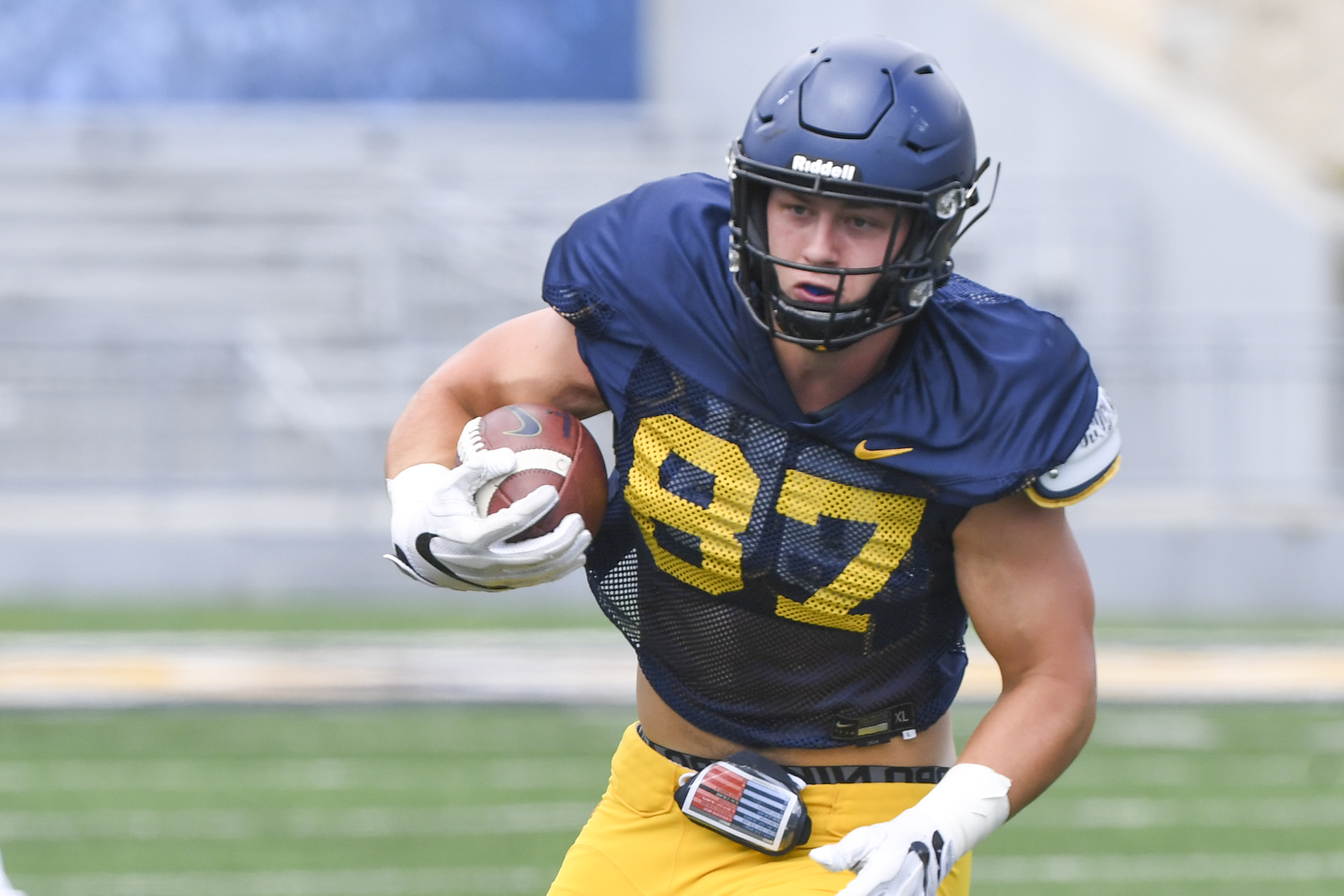MORGANTOWN, W.Va. — Leaving West Virginia was the last thing Mike O’Laughlin wanted to do. But when Dana Holgorsen departed for Houston in January, he realized it would be foolish to not consider looking elsewhere. In the Big 12, there’s no guarantee an offensive coach will have much use for a tight end.
“There was a couple-week period where you didn’t know who was going to come,” O’Laughlin said. “The biggest concern for a tight end is what offense they’re going to run.”
As a precaution, O’Laughlin entered the transfer portal. When the Mountaineers hired Neal Brown, the decision felt justified. Upon reviewing film of Brown’s offenses at Troy, O’Laughlin didn’t quite see where he would fit in.
“You kind of do your homework,” O’Laughlin said. “He didn’t have any tight end bodies when you looked at the offense at Troy.”
O’Laughlin’s proactive move was shaped largely by his parents’ personal experience.
J.J. O’Laughlin was recruited to Illinois, where he served as a backup to Jeff George as a true freshman. After the following season, coach John Mackovic was hired by Texas and replaced by defensive coordinator Lou Tepper.
Tepper proved to be a ham-handed handler of quarterbacks as a head coach, and the elder O’Laughlin transferred out after a miserable one-year experience.
“You want to play for a coach and a team who want you there and want to see you succeed,” J.J. O’Laughlin told the Los Angeles Times in 1993 after landing the starting job at Cal State-Northridge.
His future wife, Kathleen, a setter on the Illini volleyball team, later finished her own career at Northridge as well.
Luckily, their son doesn’t have to concern himself with such problems.
It turns out Brown loves tight ends. The issue was getting them to a Sun Belt school. With only so many tall guys who can block and catch to go around, it can be a challenge for mid-major programs to land tight ends. Big boys tend to get stockpiled by big-boy schools.
O’Laughlin was mollified after talking to Brown, who met individually with every player shortly after getting the job.
“What put me at ease was the type of guy he was,” O’Laughlin said. “He’s a player-first guy. The team’s so important. There’s other programs out there that care about superstars, and that works for them sometimes. But when you have guys jell together, that’s something special. You could have 11 guys that trust each other on offense and defense and win championships.”
Brown sees O’Laughlin developing into a potential key contributor this season. The Mountaineers had to lean heavily on him during fall camp with fellow tight ends T.J. Banks and Jovani Haskins spending the majority of practices in non-contact green jerseys.
Banks and Haskins are finally healthy and getting back to full speed now that WVU is preparing for James Madison, but O’Laughlin may end up being the one seeing more snaps against the Dukes.
“O’Laughlin is a guy that continues to do well,” Brown said. “It’s a big transition. The last time he played full-contact football he was 197 pounds in high school. Now he’s up near 250 pounds.”
O’Laughlin’s return to the field is a story in itself even without any detours through the transfer portal.
His West Virginia career began in the worst conceivable way as he tore his ACL in his first practice as a Mountaineer.
“I was shocked at first,” he said. “You go into the dark, into a cave for basically nine months. You’re not in the limelight. You’re just working your butt off to get back.”
He thinks the year off turned out to be a good thing. O’Laughlin is 40 pounds heavier than he was when he got hurt, and his body is ready for the rigors of his position.
“It was good for me. My body has changed,” he said. “I had some time to grow and develop.”
He’s not cocky enough to think there won’t be some adjusting to do when he gets on the field, though.
“I haven’t played football in a year and change,” O’Laughlin said. “There’s some stuff I have to clean up. But I’m happy with the progress.”
He’s also happy with the location.
“I love the nature [of West Virginia],” said the Chicago-area native. “You’ve got no professional teams in the state and all these fans who live and die by what you do here. I don’t know what else you could want in a university.”




